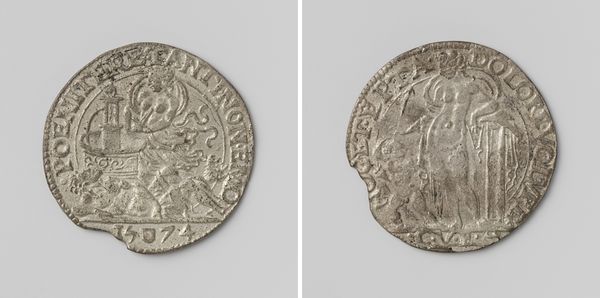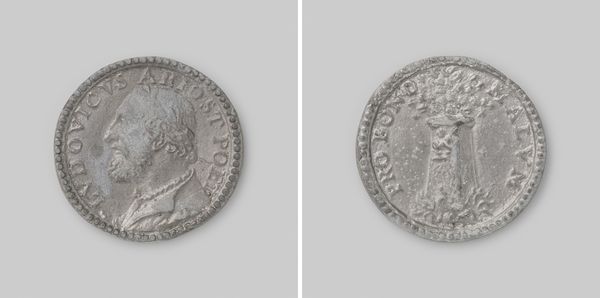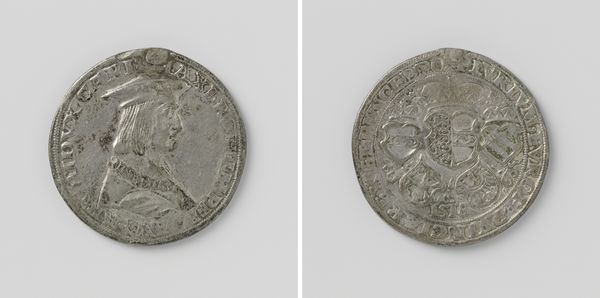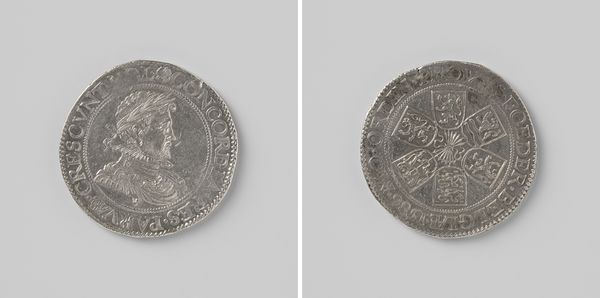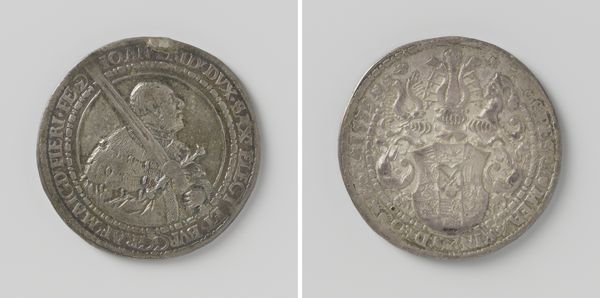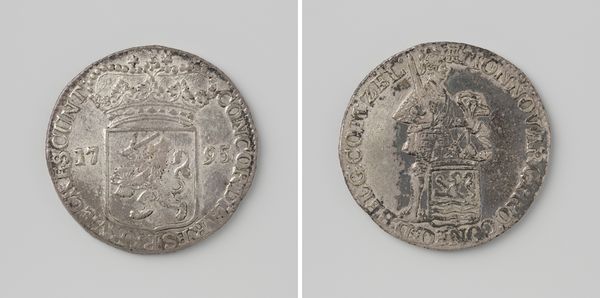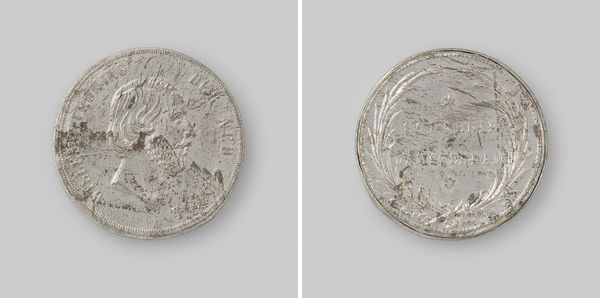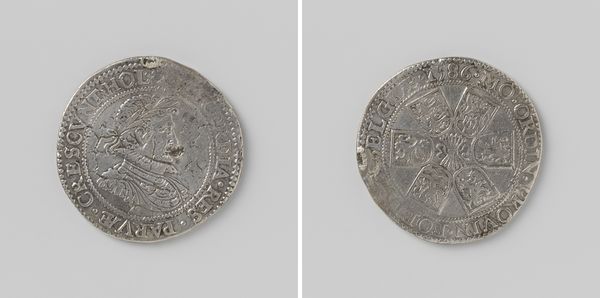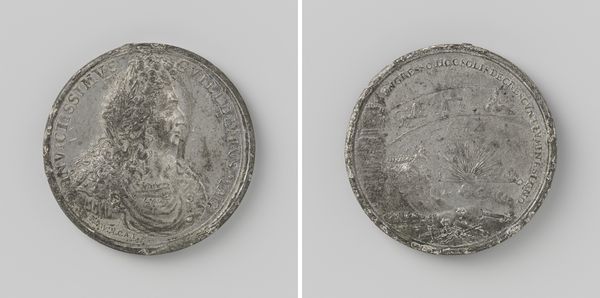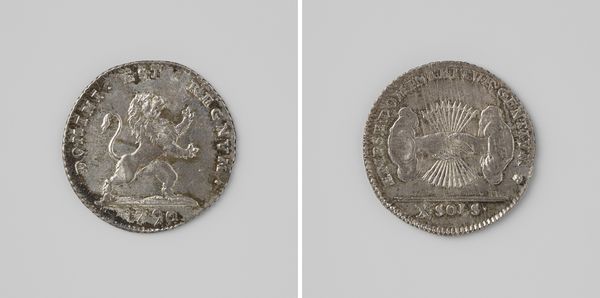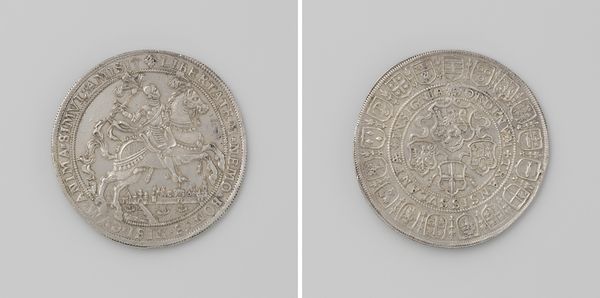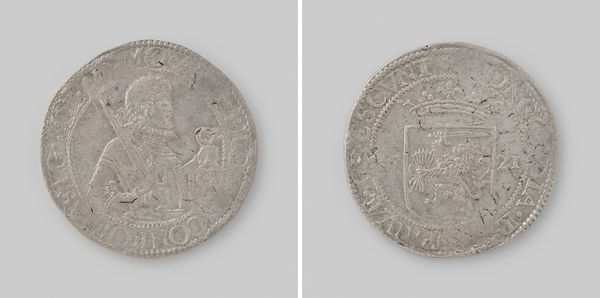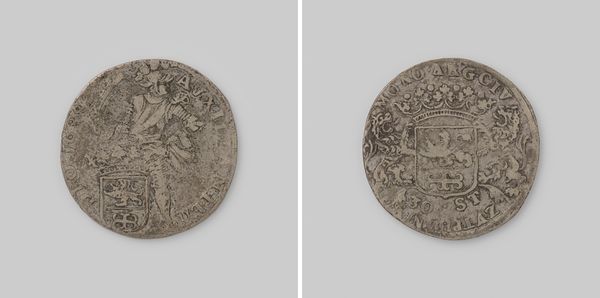
carving, metal, sculpture
#
carving
#
metal
#
sculpture
#
11_renaissance
#
ancient-mediterranean
#
sculpture
#
carved
Dimensions: diameter 4.1 cm, weight 26.78 gr
Copyright: Rijks Museum: Open Domain
Curator: This is a Dutch silver coin known as the Hollandse leeuwendaalder, dating back to 1576. Editor: It's fascinating! It looks so worn, aged by centuries of transactions. And yet, I can clearly make out a lion. What does it mean? Curator: The lion, rampant, appears on both sides of the coin. These coins were struck in the province of Holland and became hugely popular for international trade during the late 16th and 17th centuries. Think of it as one of the world’s first global currencies. Editor: A powerful statement of Dutch economic strength, right from the Renaissance. Was it purely about trade, or were there political implications too? Curator: Absolutely political. The lion was already an established symbol for the Netherlands. The rise of the leeuwendaalder mirrors the Netherlands' own ascent on the world stage, asserting not only their financial prowess but also their identity and independence, especially given their ongoing struggle for liberation from Spanish rule at the time. Editor: You can see this resistance reflected even in its design; a fiercely independent nation rising against imperial forces. Were such coins widely circulated? How accessible would it have been to ordinary people? Curator: Very widely indeed. The leeuwendaalder's consistent silver content and reliable weight made it trusted even in regions beyond Dutch control. Though it held considerable value, it found its way into markets across Europe, the Middle East, and even colonial America, effectively touching a large segment of the population involved in global trade. Editor: So more than just money, this was an ideological object, subtly influencing international perception through the imagery of the lion. It's amazing how much history and politics can be embedded in such a small, seemingly insignificant object. Curator: Precisely. The leeuwendaalder highlights the intersection of art, economics, and politics and stands as a compelling witness to the Netherlands' pivotal role in early modern global trade. Editor: Thinking about it now, this lion roars across time, symbolizing economic liberation as powerfully then as it does in retrospect. Curator: I find it striking how such a simple design and accessible economic object became such a powerful symbol for its time.
Comments
No comments
Be the first to comment and join the conversation on the ultimate creative platform.
